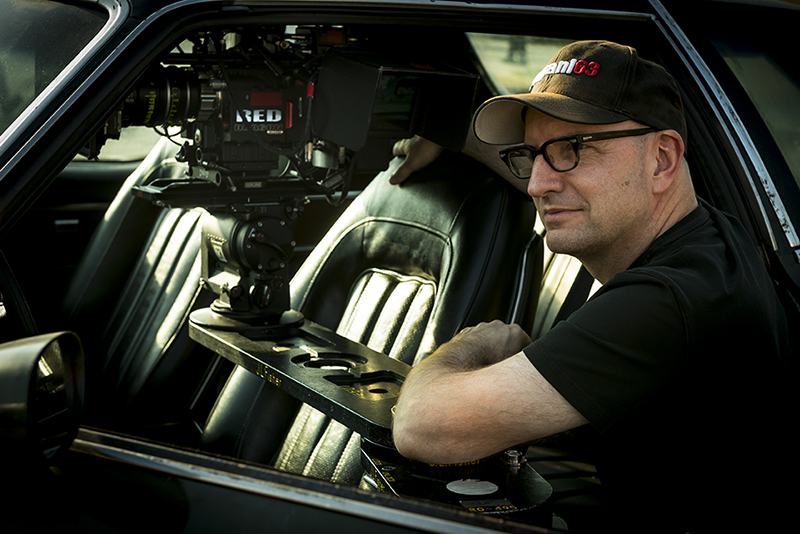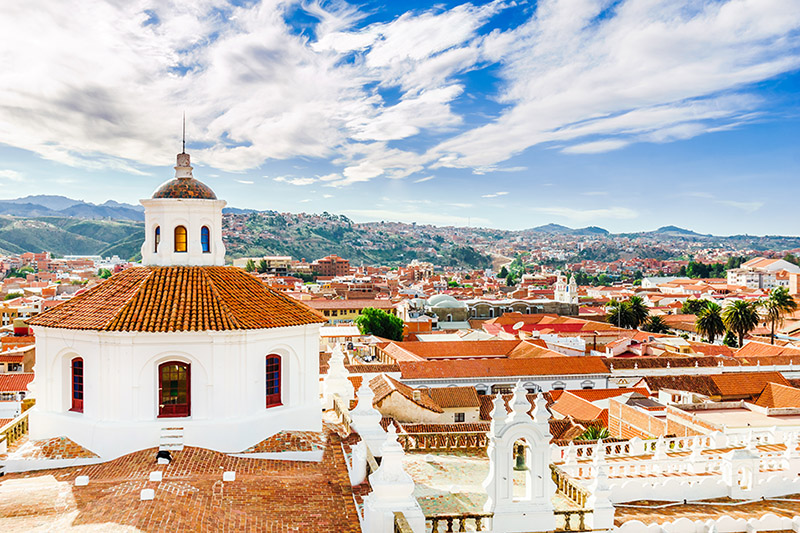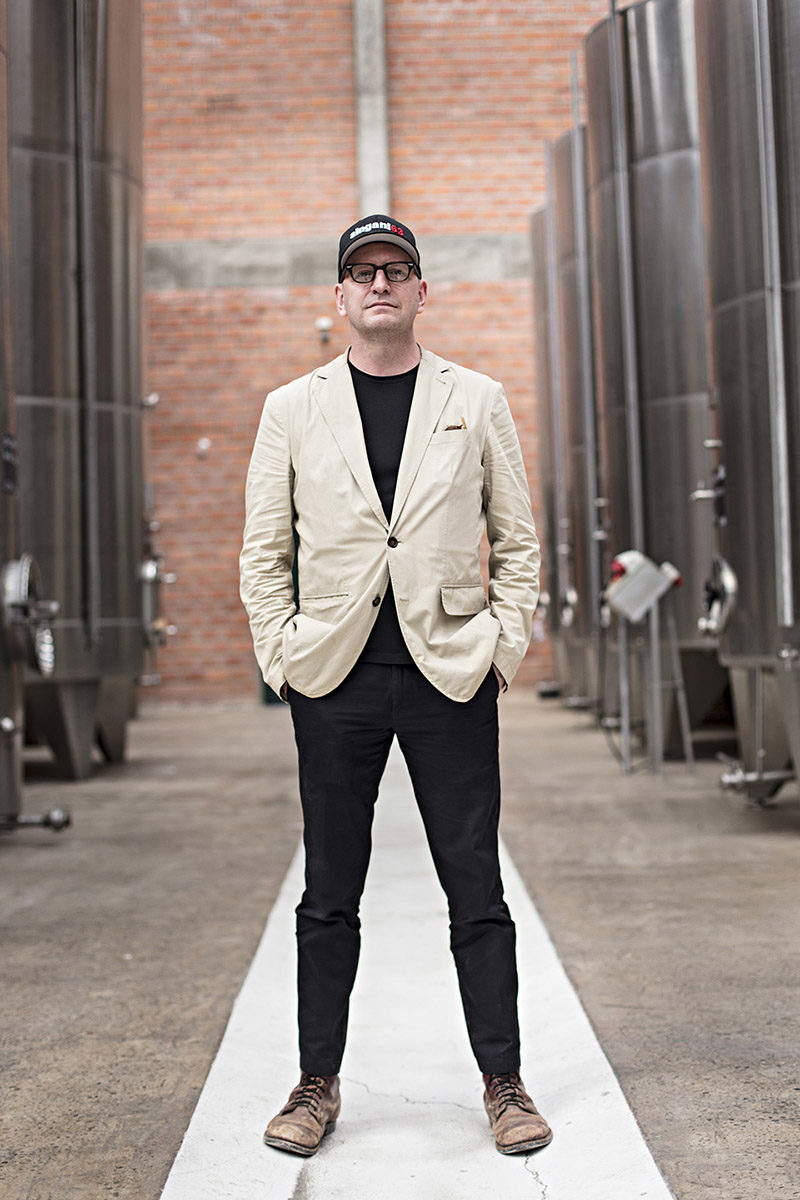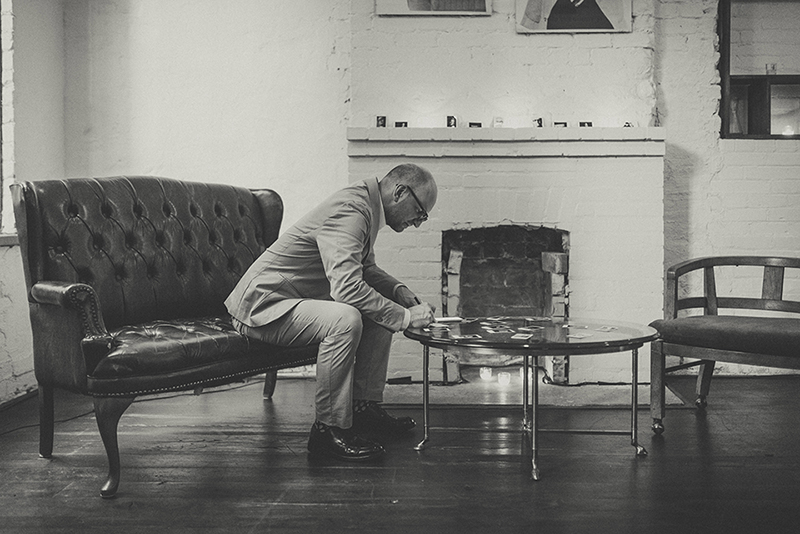

Director Steven Soderbergh. Credit: Steven Soderbergh
Director Steven Soderbergh’s revolutionary sex, lies and videotape came out in 1989. And many hits followed, including Traffic, Contagion and his newest project, 2019 polished basketball drama High Flying Bird on Netflix. And while the Academy Award-winning auteur’s love of cinema hasn’t wavered throughout the years, he has discovered a few new hobbies, most notably Bolivian spirits.
We’ll let the dynamic director tell the story of how he found Singani 63 and fell in love with the country from which it originates. The following retelling won’t have near the intrigue of Erin Brockovich or the plot twists in Ocean’s Eleven, but it does reveal clues to the possible direction of Soderbergh’s second career act — should he ever put down the camera, of course.
Where in the world are you right now?
I’m in New York.
What makes New York special to you?
I think it’s a combination of things. I probably inherited a bit of my interest in it from my father, who was born in Brooklyn, raised in East Orange, New Jersey. He then was in the Marine Corps, then became an academic.
We moved around a lot. I was actually born in Atlanta at Emory University. But my father, I think, always viewed New York as this pinnacle of American culture. Certainly, he viewed anything that appeared in The New York Times as gospel. And when you combine that with being interested in the creative arts, you know, New York has a very strong pull.
So, as I was navigating my way through my career, at a certain point I felt, “Oh, I should try to get to New York.” And it took a while. I moved here in 2002. Prior to that, I was in either Louisiana, Virginia or Los Angeles.

Soderbergh on the Job. Credit: Steven Soderbergh
One thing that captivated me about your new film, High Flying Bird, were the beautiful shots you captured of common streets and regular buildings. When you film in New York, how difficult is it picking where you shoot?
Well, I think it’s really difficult. [I’m not saying that] so people will pat me on the back, but you’re just dealing with over a century of great filmmakers filming the city, and it is a challenge to figure out how you’re going to portray New York in a way that doesn’t feel like a copy and yet is appropriate to the story you’re telling.
The good news with this, in our case, since it was a low-budget film, that kind of acted like a filter about where we could be and where we couldn’t be. We were able to find some really interesting locations that weren’t expensive. But ultimately, we had to be creative in finding locations that had the kind of scale and felt like money but, at the same time, you hadn’t seen 100 times before in a TV show or a movie.
That’s the other thing: you have multiple TV shows shooting in the city at all times. My office is down in Tribeca, and every other day there’s a film crew with all the trucks in the neighborhood, so you know that this is a very popular place to shoot. But one thing that helped us is that we were such a small crew and we had such a tiny footprint, that helped us get into a couple of places that, had it been a normal-sized production, we wouldn’t have gotten in.
What have you enjoyed most about this Steven Soderbergh journey?
Probably that each project provides an opportunity to learn about a subject and, sometimes, [I get] to visit a place in the world that is unfamiliar, and that, luckily, people are interested in collaborating or sharing their experience with you when they learn you are going to make a film or a TV series.
Actually, High Flying Bird is a perfect example of that. I’m somebody who has watched sports and played sports, but this was an opportunity for me to enter a world that I’d thought about but hadn’t really done a proper deep dive on — the financial structure of these major sports leagues and how this affects the players, not only the ones that have played and have retired, but the players who are entering the league.
That was great, to talk to people who represent those players. So, I think that is the best part of it. Going and making a movie like Contagion, for instance, and getting to talk to all the people who work in that field and visit the CDC and shoot at the CDC. That’s really exciting.

Bolivia. Credit: Street Flash_iStock
Speaking of immersing yourself into new worlds, the movie Che was filmed in Bolivia. Tell me a bit about that country.
I’m biased, of course, but I think Bolivia is a fairly unique country in South America. One of the most obvious reasons for that is that it is landlocked. Being landlocked has very practical implications, which we discovered when we started working with Singani. There is no port. So, everything that needs to be brought into that country or taken out of that country needs to enter or exit through a third country.
That creates very interesting logistical issues, and I would argue it also creates a very interesting psychological makeup. There’s been this ongoing, lengthy legal battle between Bolivia and Chile, where Bolivia is trying to argue that this certain strip of land belongs to Bolivia and should be returned to Bolivia.
Now you can imagine the symbolic status that this lawsuit has for people in Bolivia and in Chile. As a result, I found the Bolivian people to be somewhat reserved, very proud. I’m partially Swedish and I found something very Swedish about the Bolivians. They hold to themselves. And they’re very generous hosts, but they wait a while before they really allow you in.
I’ve mentioned this to my Bolivian friends, if I’m imagining things, this sort of reservation that I found very familiar and actually not at all discomforting. They agreed that Bolivians play things very close to the chest. That’s just the way they are.
What’s the story behind your introduction to Singani 63?
It’s a very random sequence of events that resulted in Singani being produced and then an even more random sequence of events that led to my exposure to it. The Muscat of Alexandria grape was in Alexandria, Egypt, and found its way to Spain, which 500 years ago, wasn’t an easy thing to do, and then traveled through, what I’m told, Spain and into South America, into Bolivia, carried by missionaries and monks. It made its way into the southern part of Bolivia, where the Andes Mountains begin, which is about the worst place that you can grow anything. It’s a terrible environment for something like a grape. The elevation there is around 6,000 feet.
Tens of thousands of years ago, it used to be under water and, when that water receded, it took all of the minerals with it. So, when the company that I’m working with, Casa Real, began the process of formally producing Singani and industrializing its production, they began to reach out to agriculturalists in other parts of the world, like the Middle East and parts of Africa, to learn what was the best way to try and grow something in this environment. And they succeeded.

Soderbergh Takes a New Stand with Spirits. Credit: Steven Soderbergh
But as a result, the grape itself really has to struggle between the altitude, the exposure to the sun during the day, which is very intense, and these very cool temperatures at night, it has to grow a very thick skin in order to survive. And as it turns out, that’s where all of these aromatics are held.
So, you get this grape that went on this very strange journey from its home base in Egypt down into Bolivia and yet somehow finds its best expression by having to grow in this inhospitable soil. It’s really weird to me how this grape ended up there and how it all turned out so well.
How tough or easy has it been introducing Singani to bars and hotels?
It’s interesting. It’s one of those situations where you can decide to characterize a difficult situation as an obstacle or an opportunity. The obstacle is a spirit that nobody had ever heard of in this country, literally. The opportunity is in the fact that this is a new story and it’s a story with a very interesting and long history. So, it’s a legacy brand already and that’s built in. Those are hard to find. It’s hard to find spirits that are 500 years old that people haven’t heard of.
So, that turned out to be an opportunity, the fact that Singani, prior to 63 coming to the United States, had never been exported outside of Bolivia. The approachability of the spirit and its versatility resulted in a pretty strong level of receptivity when we began to take it out to the market.
That was the good news, that our target was the top mixology accounts in any market that we went into. We started here in New York and the feedback was very positive. We were able to get brought into some really wonderful accounts.
Now the trick becomes how do you sustain that? It’s one thing to get onto somebody’s back bar, but if they don’t have people coming in and asking for it past a certain point [what’s the point?] The competition to be on the back bar is so intense. We’re going up against billion-dollar brands who are paying thousands of dollars to be on the back bar, so it can be tricky convincing all these accounts to stick with us, to put us on the menu, when they’re not really compensated by us the way they are compensated by some other brands. It’s a slow process of getting the consumer educated on what Singani is.
Where are some of your favorite destinations to visit either for work or for pleasure?
Well, it’s interesting because I’ve never traveled for pure pleasure really. I mean, there are places that I will go when I have some time off. But most of my travel has been work related. [But if] I had to say, Japan I find really fascinating. I’ve been there a few times. I’d love to work there. I’d love to shoot a movie there or some sort of project with an all-Japanese crew in the Japanese language. I’d love to do sort of immersion into that culture. I just find it really interesting. It’s a fascinating clash of ideas and I’d like to know more.
Of all the film cultures around the world that I’ve been exposed to and all the films in other languages that I’ve seen, I’ve seen more movies made in Japan that any other country. So, there is something there that I want to get a little deeper into. I just haven’t had the opportunity yet.
I’m fascinated by what you said about not traveling much for pleasure. Is that just because you worked, worked, worked or you just haven’t made the time for that week in Hawaii?
It’s a little of both. It’s hard for me to completely disconnect because I like my work. And that’s a rare thing. I jump out of bed in the morning to go to work because I like the work that I get to do. The number of people in this world who get to not only decide when they’re going to go to work but how they’re going to be compensated [is low]. I don’t think there’s a decimal point that reaches out that far. That is a very, very, very rare thing.

Soderbergh. Credit: Steven Soderbergh
If I go somewhere with the express intent of being on vacation, it takes a few days for me to reestablish some sort of rhythm that is not entirely focused around work. I’m sure it’s very frustrating for my wife.
It’s hard to make that disconnect.
Yeah, when you love it. A lot of people go on vacation so they can forget about work because it’s something that weighs on them. It’s the opposite for me. But I’m getting better. I’m getting better.
